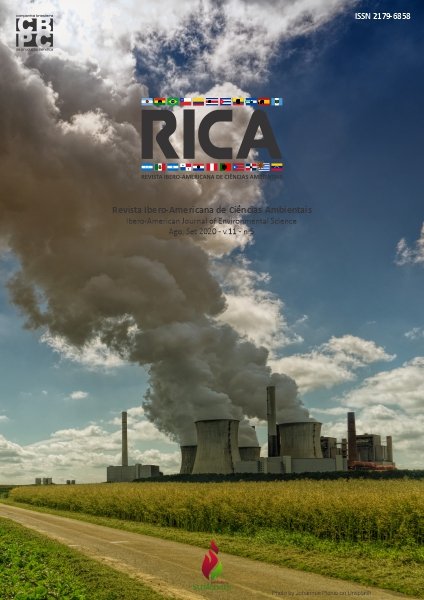Growth Dynamics and Diametric Distribution of Cerrado Native Forest Fragments in Western Bahia, Brazil
DOI:
https://doi.org/10.6008/CBPC2179-6858.2020.005.0039Keywords:
Diameter, Pequizeiro, Environmental Sustainability, West of BahiaAbstract
The diametric distribution is a tool to analyze the structural distribution of arboreal individuals whose purpose is to demonstrate the renewal or not of new individuals in the environment. Thus, this search aimed to evaluate the diametric structure of the tree population where native species such as Caryocar Cuneatum, popularly known as Pequi, predominate. This native species from the Brazilian Cerrado is of great socioeconomic value and difficult to natural twinning and has great socioeconomic and cultural utility and is explored throughout Western Bahia, which highlights its importance even more in studies on the regeneration of native species. The workspace was located in fragments of the native Cerrado unmanned with the physiognomy of Chapadão with many arboreal individuals with height between 8 and 12 m in the municipalities of Baianópolis and Cristópolis-Bahia. For the study, measurements of diameter at breast height (DBH) were collected from the entire tree community of the implemented plots. Through an inventory carried out in an area of 1/2 hectare (50 x 50 m) in each municipality. The diametric structure was analyzed for the entire arboreal community, however the trees of the Caryocar family had their data analyzed among themselves and together with the community, due to its relevant importance for the region. The statistical analysis of the data of the plots was used the Microsoft Office Excel 2010 program, to obtain the following variables: lower limit, upper limit, central value, observed frequency, accumulated frequency, basal area, transversal area, basal área in m² and accumulated basal area. Which made it possible to assess that the trees present positive asymmetry and kurtosis of the platicurtic type, which demonstrates the typical pattern of native forest in the form of an inverted or negative exponential 'J', but in an unbalanced way. It is concluded that the arboreal population, including the species Caryocar Cuneatum, are developing within the inserted environment, but attention is required.
Downloads
Downloads
Published
Issue
Section
License
The CBPC - Companhia Brasileira de Produção Científica (Brazil CNPJ: 11.221.422/0001-03) the material rights of the published works. The rights relate to the publication of the work anywhere in the world, including rights to renewals, expansions and dissemination of the contribution, as well as other subsidiary rights. All electronically published works may subsequently be published in printed collections under the coordination of this company and / or its partners. The authors preserve the copyright, but are not allowed to publish the contribution in another medium, printed or digital, in Portuguese or in translation.









